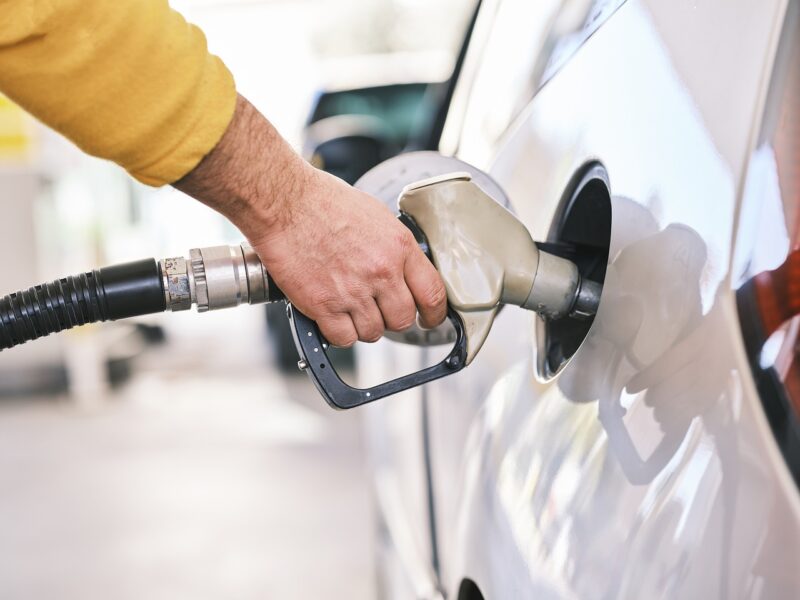How to Improve Your Car’s Fuel Efficiency and Save Money
November 10, 2024

In today’s world, where fuel prices seem to constantly rise, improving your car’s fuel efficiency is not just about saving money; it’s also about being more environmentally conscious. Consuming less fuel means emitting fewer greenhouse gases, which contributes positively to our planet’s health. In this article, we will explore practical tips and strategies to enhance your vehicle’s fuel efficiency, allowing you to save money while making a positive impact on the environment.
1. Understanding Fuel Efficiency
Fuel efficiency refers to how effectively a vehicle uses fuel to produce energy and propel it forward. It’s typically measured in miles per gallon (MPG) or liters per 100 kilometers (L/100 km). The higher the MPG, the more fuel-efficient a vehicle is. Understanding these concepts is crucial as you look for ways to improve your car’s efficiency.
Factors affecting fuel efficiency include:
- Vehicle Weight: Heavier vehicles require more energy to move, thus consuming more fuel.
- Driving Habits: Aggressive acceleration and braking can decrease fuel efficiency significantly.
- Engine Condition: A well-maintained engine and fuel system enhance efficiency and performance.
- Tire Pressure: Under-inflated tires create more friction, reducing fuel economy.
By addressing these factors, you can achieve substantial improvements in your vehicle’s fuel efficiency.
2. Regular Maintenance Matters
Keeping your vehicle well-maintained is vital for optimal fuel efficiency. Regular maintenance can prevent significant issues and enhance efficiency. Here are some maintenance tips to consider:
- Oil Changes: Use the recommended oil grade for your vehicle and change it regularly. Clean oil reduces friction, improving engine performance and fuel efficiency.
- Air Filters: A clean air filter allows for optimal airflow to the engine, maximizing combustion efficiency. Replace your filters as recommended by the manufacturer.
- Spark Plugs: Worn or dirty spark plugs can cause misfires and inefficient fuel use. Replacing them regularly ensures smooth engine operation.
- Fuel System Cleaning: Over time, fuel injectors can become clogged, decreasing efficiency. Regular cleaning can improve fuel flow and optimize combustion.
By prioritizing regular vehicle maintenance, you can help improve your car’s fuel efficiency significantly.
3. Optimize Your Driving Habits
Your driving habits play a crucial role in your vehicle’s fuel efficiency. Here are several best practices to adopt:
- Smooth Acceleration and Deceleration: Avoid sudden starts and stops. Gradual acceleration and coasting to stops can enhance fuel economy significantly.
- Use Cruise Control: On highways, employ cruise control to maintain a steady speed, helping to conserve fuel.
- Limit Idling: Turn off your engine if you expect to idle for more than a minute, as idling consumes fuel without advancing your journey.
- Moderate Speed: Higher speeds increase air resistance, leading to greater fuel consumption. Driving at moderate speeds is more fuel-efficient.
By adjusting your driving style, you can achieve a marked improvement in your vehicle’s fuel efficiency.
4. Reduce Weight and Drag
The weight and aerodynamics of your vehicle can significantly impact fuel efficiency. Here’s how to reduce drag and weight effectively:
- Lighten Your Load: Remove unnecessary items from your car. Every extra pound requires more fuel to drive, so aim to keep your vehicle as light as possible.
- Optimize Roof Racks and Carriers: If you use roof racks or carriers, remove them when not in use. They create additional aerodynamic drag, leading to increased fuel consumption.
- Streamline Your Vehicle: Consider additional aerodynamic enhancements like side skirts or air deflectors, which can help reduce drag.
By implementing these changes, you’ll reduce weight and drag, thereby improving fuel economy.
5. Choose the Right Fuel and Tires
The type of fuel and tires you use can greatly affect your car’s performance and efficiency:
- Use the Recommended Fuel Grade: Always check your owner’s manual for the recommended fuel grade for your vehicle. Using the correct type can optimize engine performance and efficiency.
- Consider Fuel Additives: Fuel additives designed to clean your fuel system can help improve combustion efficiency, leading to better fuel economy.
- Select Low Rolling Resistance Tires: Tires that minimize rolling resistance require less power from the engine to move, promoting better fuel efficiency. Keep your tires properly inflated to optimize their performance and lifespan.
Using the right fuel and maintaining the correct tire pressure can enhance your vehicle’s efficiency measurably.
6. Embrace Technology
Today’s vehicles are equipped with various technologies designed to improve fuel efficiency. Here are some ways to take advantage of this:
- Monitor Fuel Usage: Use onboard diagnostics or smartphone apps to track your fuel consumption. Understanding your fuel economy can help you identify habits that need adjustment.
- Use Fuel-Efficient Navigation Apps: Employ apps that consider traffic conditions and provide optimized routes to minimize idling and detours, thus saving fuel.
- Consider Hybrid or Electric Options: If you’re in the market for a new vehicle, consider fuel-efficient models like hybrids or fully electric vehicles, which can significantly reduce or even eliminate fuel expenses.
By leveraging technology, you can enhance your overall fuel management and efficiency.
Conclusion
Improving your car’s fuel efficiency is an achievable goal that can lead to significant savings in fuel costs while contributing to a healthier environment. By implementing the strategies we’ve discussed, such as regular maintenance, optimizing your driving habits, reducing weight and drag, choosing the right fuel and tires, and embracing technology, you can enjoy increased efficiency and reduced expenses.
Taking control of your vehicle’s fuel consumption not only helps your wallet but also promotes eco-friendly practices that benefit the planet. Start making these small adjustments today, and watch how they contribute to both your savings and a greener future.







